
Thank You Volunteers

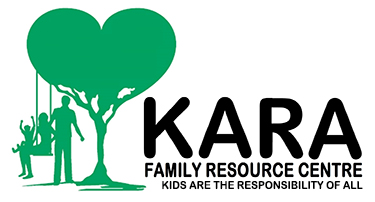
Promoting The Healthy Development Of Children By Empowering Families

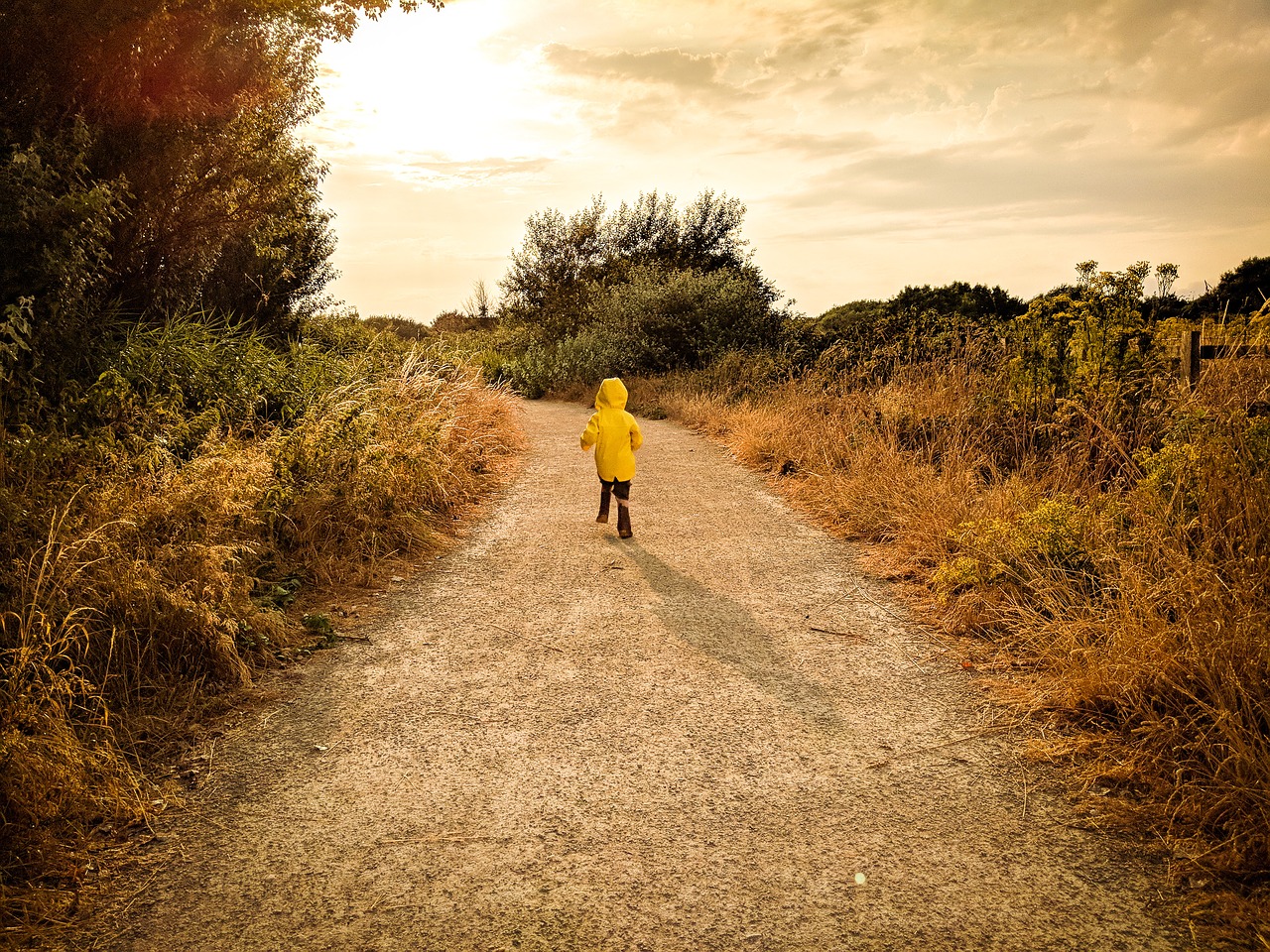
KARA has been a part of my life since 2013 and a part of my children’s lives since 2015. It has been a constant companion through countless adventures and learnings. The amazing individuals that work at KARA have been a family to me. They were there when I got married, there when I announced all of my pregnancies, there when I learned how to change a diaper, there when I found my passion for writing, and there when I tried numerous new parenting skills learned in their classes or by writing my blogs. Saying goodbye to a close-knit group of people who have been with me through so much is never easy.
Before I was ever a parent, my pre-parenthood days with KARA, I was a Data Manager. I sat behind a desk and logged participants and wrote year-end reports for funding purposes. After my husband and I got married (the KARA family thoughtfully threw us a Wedding Shower), we later announced our first pregnancy (to which they then threw us a Baby Shower)! A few months into my pregnancy, a thoughtful KARA manager asked me if I’d ever changed a diaper. I can only imagine what my face looked like as I nervously uttered “no…” She led me upstairs to one of the baby changing tables and let me practice on one of the dolls. She caringly stood by me as I fumbled with the doll here and there, giving me encouraging words and helpful advice. After a while, I had successfully diapered and swaddled my first “baby.” It was a moment I will always be grateful for.
In a similar situation, I helped facilitate a short-handed staff group during their Caring for Families program. I recall sitting in the baby room with a senior facilitator who pointed out each of the objects in the room, detailing which objects were used for each stage of baby development. I took countless notes and even came back to her several times both before and after having my son, asking for more advice on baby toys and furniture. This was how I originally started my mommy collection that has helped my children grow and thrive. This is also how I learned about KARA’s Ages and Stages Questionnaire, and how I could boost my child’s development with specific activities and items.
After I’d had my children, I started attending the parenting programs (when there was room). Through the wise and caring patience of another of KARA’s facilitators, I learned about the importance of reading to my children. Some of my children’s first books were obtained in the Books for Babies program that used to run at KARA-Too. I recall sitting in a circle with many other first-time parents. My son was so young, he couldn’t even sit without support. Yet his eyes followed me as he heard my voice reading stories to him, even smiling once or twice. What a memory to cherish. This particular KARA family member was my continuous inspiration for writing as well, giving me several books to reference and learn from. She also taught me the importance of patience.
Since these early days at KARA, I’ve become quite the parent, spurred on by the advice, instruction, and guidance of these senior mentors. I’ve been renowned in my inner family and friend circles for being one of the most knowledgeable parents and am even bombarded with questions whenever I attend social gatherings. I even started writing my parenting experiences, both in blog form for KARA and in personal novels for my children. All of my parenting accomplishments, my children and their learnings as well, I feel, stem from these humble beginnings. I could not be more thankful.
So even now that I am saying goodbye, it is bittersweet. Yes, I am embarking on the next chapter of my life, and what a busy one it will be – with my third child, my first daughter, my two sons, and my environmental career in full flight. But I feel that I have gained so much knowledge from my 9 years with my KARA family that I would never truly be leaving. I will still see many of my mentors in my parenting actions, hear them in my words, and feel them in my heart.
So my final message to you, should you faithful readers wish to hear it, is to use KARA to your full advantage. The senior mentors that roam the halls there were the voices I heard in my early days as a parent. I could not have been the mom I was and am without them. So attend your classes, ask all of your questions, and listen to the wise words that I still hear when I parent my children.

Photo courtesy of Mommy Nearest
Every year, my family has taken part in the time old classic of reinventing ourselves for the new year ahead. I’ve tried many successful (and unsuccessful) new resolutions myself over the years, undertaken many new activities, and even participated in a few friendly competitions while doing so. When my husband and I had our first child, and became a young family, my New Year’s resolutions took on a more holistic theme, incorporating my baby and husband. As our family grew, our resolutions morphed into fun activities, adventures, and growth opportunities. Last year, my family even started a weekly family game night!
This year, my family would like to try a few new resolutions to brighten our days and grow as a family. I’d like to share them with you. I’d also like to share a few past resolutions that I’ve tried, ones that I sometimes struggled with and tips on how I plan to make them work this year.
Before going on though, I want to add a little cautionary note to this article: not every resolution works (shocking, I know)! But I’ve always found that even the ones that don’t still gave me and my family fond memories and happiness, even if just for a short time. So never get discouraged! New Year’s resolutions are for fun after all!
Get Outside More
Historically, this has been a New Year’s tradition for me. I’ve called it different things (running more, exercising, going on adventures), but it’s generally a well-known New Year’s resolution in many households. It typically starts strong in the first month or two of the year then peters out when the weather gets really cold. No matter how long my family keeps it up for though, we always enjoy it!
This year, I’m giving myself a tip (and you too) to help keep the adventure alive: telling my kids when the weather is nice, frosty comes out to play.
My kids really do keep me young at heart, and also keep me from going back on my word! When I’ve told them we are going to do something fun, they always make me keep my word. And I know it’s important I do to help them build honesty and trust. So I told them frosty likes warm weather. Whenever the sun is shining, he comes out to play. And they remind me whenever the sun starts peeking through the window! It’s been a great method in keeping the energy up and getting the fresh air we need outside! Being held up in the house with many former activities now out of reach, the army of snowmen we’ve created outside really has been a great morale booster too!
Keeping Pen Pals
As a kid, I often tried to write letters to my friends and keep regular correspondence with family too. This was just something not meant to be though. Once I got my first phone, I wrote only to my Great Aunt, who lives in Scotland. As the distance is so great, the letters took a great deal of time to reach either of us so the general pen pal feeling was lost after some time. I did try to gain new pen pals as I left my college years and started a family, but having a vehicle to bring me to my family members took the fun out of it once more as I often saw them in person before they received their letters!
This year, with the new normal still strong, my family and I have rekindled this long lost art. We seldom see any of our old friends anymore so have started crafting some letters. The kids have been having a blast doing so too, using their new Christmas gift (art supplies) to build their own letters! I love how inspired they are and the new skills they are gaining too. It will surely do them well when they start attending school.
But how do I plan to keep this going throughout the year? By enlisting my honest little prompters again! Funny enough, my older son knows what a ‘year’ is by knowing the sequence of holidays in the year. As soon as one holiday ends, he begins preparation for the next holiday (just like his Mom). We have hours of fun making crafty decorations or planning the tasty treats to enjoy the day of. But this year, we will also be sending cards to all of our families and friends! He has already made eleven cards for his cousins and brother. I hope to continue this tradition (and building new skills) throughout the year on other holidays!
Keeping a Record of Fond Memories
In past years, when I had more time on my hands, I really liked making photo albums. I made digitized ones and had them printed by photobook companies. It made for great collages of my finest memories.
It’s been a few years since I’ve made one, so this year, I’m going to make one for each of my children. How will I inspire myself to make this resolution a reality? I’ve been showing my children past ones I’ve made and made a promise to each of them I will make them one before the year is out.
I’m really looking forward to completing this task as it will not only be a fun activity to do together as a family but will also be a cherished record of my kids during their young lives they will have forever.
If you like this idea, you can also get in on the memory record-keeping game with old-fashioned photo albums, artistic collages for your walls, and making albums within social media platforms! They all work to keep your memories alive!
Practice a Positive Cognitive Skill
Lastly, this year, my family and I are planning on doing something new around the house on a daily basis that will help boost morale and show our appreciation for one another. It’s not exactly something we don’t normally do, but this year we plan to make it a resolution to try to be more cognisant of. We plan on showing gratitude whenever an opportunity presents itself.
In our busy day-to-day lives, sometimes we forget the struggles of our other family members. Sometimes we don’t notice the hard work that is being completed right before our eyes. We grow so used to the qualities that make our individual family members so amazing that we pass it by, forgetting to show gratitude. But the little things, like saying thank-you, really do make all the difference.
Therefore, my husband and I plan to make a conscious note to keep showing our gratitude towards each other and our children whenever possible! To show our appreciation has really benefitted our relationships with each other, and taught our kids the importance of gratitude by leading by example too.
How do we do it? A couple easy steps to start you off are to listen to one another during a conversation, make eye contact when listening or speaking, giving compliments for big and small things, and show appreciation for the efforts taken by others. These small gestures make home life very happy. So how do we plan to keep it up?
Try this! Whenever someone shows you gratitude, make a mental note to return the appreciation when possible. Even though it’s tough to explain this to a young child, by doing this, they catch on pretty quick! Compliment them, listen to them (and even say “I’m listening to you”) while making eye-contact, and say thank you. They will eventually start to mimic you and the mimicked actions will eventually turn into real feelings. It’s pretty amazing when your child starts thanking you for reading them their bedtime stories!
Last Note
Did you have a chance to come up with your own New Year’s resolutions this year? Any ideas you’d like to share? Please reach out to me because I’d love to hear about them! Also, if you liked any of my resolution ideas and are hoping to give them a go with your family, tell me about it! Thanks for reading and Happy New Year!

My husband and I are very happy to announce we are expecting our third child!
It’s been a tough year for everyone, us included, but this happy news has helped us keep going. My husband has kept very busy by handcrafting our new baby’s crib. I’ve been making lists and staying on top of sales to get the most out of our short time to prepare. With two older children, and having moved a few times, we didn’t hang on to many baby items. Restocking our shelves with common baby must-haves has made me acutely aware of the many things new babies need – including baby skincare products!
Therefore, I’ve laid out some common baby skin conditions that one might encounter in the first five years of a child’s life. Not everything is covered, or in complete detail, but many will give you an idea of what can be expected, and what measures or types of care may help. This is based on my experience and a bit of help from healthcare websites. Any advice on skin conditions or care should be sought from a healthcare professional.
Newborn Skin
Not many of you readers will be surprised to know that newborn skin rarely looks like the picture-perfect cherub seen in movies. What’s important to note is that most newborn baby skin is perfectly normal and does not need any help from us. Skin conditions mentioned below here are to be expected and do not need products, just time and proper hygiene.
Upon arrival into the world, the baby’s skin is thick with a cream-cheesy white substance called vernix caseosa. This is a mixture of old skin cells and skin gland secretions and it has an important role of protecting the baby from its old home (your womb and amniotic fluid). Very helpful if you don’t want to turn into a pickle!
Once wiped clean, babies will often be quite colourful. Their skin red, blue and blotchy, looking like they’d just come out of their first fist-fight! This is because of the pressure changes baby goes through during childbirth. Particularly quick or stressful labours can even cause bruising. But young baby will recover well in your arms, with blood circulating in the skin as normal.
Newborn skin may also be a tad hairy. This fine, peach fuzz that sometimes coats baby from head-to-toe or even in patches is called lanugo, and it’s perfectly normal. It’s also a protective covering in the womb but it is often shed before birth. Interestingly, mommies’ bodies produce hormones to prevent babies losing lanugo in the womb, which also prevents mom from losing hair! Lustrous hair is often a benefit of being pregnant for this reason! If still present at birth, lanugo will disappear within a few weeks, as will the baby’s first layer of skin, which may look like your newborn is peeling from a bad sunburn. All part of the miracle!
When my kiddos were born, I’d had already watched dozens of labour videos online to prepare myself (for the anticipated pain). My husband didn’t share in this particularly adventurous baby-birth-video-binge. I recall after Grizzly Bear was born, he mentioned the vernix caseosa and a few other things as being … unexpected. I was expecting it, from my videos, so I let him in on the secret. What I was not expecting, though, were the odd skin-nail mixtures at the ends of our baby’s fingers! His skin had attached to the tips of his nails. Giving him his first nail-cut was near impossible. That was the only unforeseen skin related difference that I really noticed with Grizzly Bear. Our second baby, however, Polar Bear, was a different story. Born chubby and pink, he did look pretty picture-perfect. Two weeks later, and his skin started peeling off in great heaps! Unfortunately, this coincided with our Welcome Baby Party. He looked somewhat like a reptile just beginning the molting process as he was passed around to each happy guest. What a funny guy! A week or so later, and back to our pink cherub!
The conclusion is that all newborns have unique skin, and with time, become the perfectly soft skin we all imagine when envisioning our children. Expect the unexpected and chat with your healthcare provider if anything worries you! If you get a chance and are also expecting, or want to check up on what your grown child had after birth, check out more info on newborn skin here.
Baby Skin
Once a child is two months old, they are generally considered to be a baby. But there are no hard and fast age rules that dictate when a skin condition can strike! Skin conditions are common among certain age groups but can appear at any time. Two of the most common skin conditions that affect babies are cradle cap and diaper rash. Here is some general information, preventative measures, and measures to help ease symptoms or treat them.
Cradle cap can develop between 2 weeks and 12 months of age. It is usually found on the top of the head but can appear on the face, behind the ears, or in any skin folds, like the groin or armpits. It looks like white, yellow, or red scaly patches. It can also look crusty or flaky. It can look itchy or painful but it’s neither. It normally does not bother a baby at all. Its cause isn’t altogether known but it’s generally thought to be caused by too much skin oil. Cradle cap is identified by healthcare professionals by its look and location. Seek medical advice quickly if any areas look red, drain fluid, or are warm to the touch as this could indicate an infection.
Cradle cap will clear up on its own in a matter of weeks or months, but you can help your baby by gently washing their hair once a day with tear-free baby shampoo. My Grizzly Bear had a very mild form of cradle cap for the first year of his life. He was completely bald and only started growing blonde hair (it looked invisible!) around the age of 1.5 years. Until then, his flaky cradle cap persisted, which looked like dandruff. He didn’t mind it at all, which is the joy of being a baby! If you want to help remove the scales though, you can use mineral oil (great for dry skin!) and a baby toothbrush to gently brush them away. Just let the mineral oil soak into the scales first to avoid hurting your baby. If the cradle cap is located somewhere other than your baby’s head, consult your doctor. They will generally provide you with a special cream. Be certain to ask about and follow any hygiene treatments to avoid potential infections. Check out more details here.
Diaper rash is, unfortunately, a common and painful skin condition that can affect any child wearing a diaper. Diapers are designed to keep pee and poop from dirtying a baby’s clothes or ending up on the floor. The problem with this is that, if not changed regularly enough, the pee and poop (or even moisture!) can damage your baby’s sensitive skin. Diaper rash looks like sore, red skin and is located in the groin area. Similar looking rashes can appear on other parts of the body but would be caused by some other irritant (like sweat).
To prevent diaper rash, which both of my kids experienced from time to time, be sure to check and change your baby often. Gently clean the diaper area with soap and water, and pat it dry before putting on another diaper. If you see a rash developing, apply a cream or ointment that contains zinc oxide. Why this ingredient? Zinc oxide is impermeable, meaning it adds a waterproof covering, like a second skin, to your baby. This gives your baby’s sore skin a chance to heal before coming in contact with pee or poop again. Another way to allow the skin to heal is to give it some air time. Air will help your baby’s skin to dry properly and heal (bacteria don’t do so well in oxygen). Yes, this means you will have a naked, unpotty-trained baby on the loose, but it will help the skin heal faster (and keep you on your toes too!).
If your baby’s diaper rash doesn’t go away in a few days, or appears to get worse, make an appointment with your doctor. And as with any other condition that shows signs of infection (draining liquid, odour, is warm to touch, or is causing great pain or fever) seek quick medical help. To find out more, click here.
Kid Skin
Toddlers and kids are mobile (much more mobile!) and can get into some pretty crazy stuff! From bumps and bruises to heat rash and chickenpox, there doesn’t seem to be an end to types of skin afflictions. Luckily, many are preventable, treatable, or manageable. I’m going to cover two that I have experience with; eczema and warts.
Eczema can look different on everyone but is generally characterized by red, itchy patches made of scaly skin or raised bumps. Its cause isn’t entirely known but is thought to be by gene variations that prevent the skin from retaining moisture, and can be linked with other allergic conditions, such as asthma. It can be located in many places but common locations are cheeks, elbows, knees, and torso. Unfortunately, there is no cure for eczema, but preventative measures include avoiding things that trigger outbreaks, such as certain foods, heat, or perfumes, like in baby products or laundry soaps. Watch your child’s symptoms carefully and take note when outbreaks strike. This may help you track down triggers and prevent your child’s discomfort in the future. One good news story is that eczema tends to improve by age 5 or 6 and can sometimes go away. A sibling of mine had eczema as a child, which did go away as she grew (mostly). She only triggers it when she travels back from hot or humid places – those pesky vacations!
To help your child with an outbreak, only give your child short baths and use mild, unscented soaps. Pat the skin dry before applying any creams or moisturizers. Dress your child in soft, breathable clothing. If your child begins scratching and damaging his or her skin, keep their nails short or put baby mitts on them to prevent scratching at night. As with any infected-looking area, seek speedy medical attention. Read more here.
Warts are also an unfortunately common skin condition. They are caused by a virus that lives in soil or even household floors. A common place to contract them is a bathroom floor, such as public swimming pool change rooms, because the moisture allows them to survive and be transmitted easily. They can affect any part of the body but are common on hands or feet as this is where kids tend to touch things. Most warts don’t hurt but can if irritated. Preventative measures include washing hands and feet when you’re out and about and exposed. Also wash the bottoms of your feet after walking bare foot in a public place or outside. If your child bites their nails, or has an open cut, keep these areas clean and covered to prevent easy access for the virus. If a wart is contracted, be sure not to allow your child to scratch or pick at it as it could then be spread to other areas or become infected.
Warts can be treated at home, but for any little ones, it’s best to have a professional take care of it. I never had a wart as a child, so when one of my little one got one, we went to the doctor. It was a plantar wart on the bottom of his foot, so walking was uncomfortable for him. Some freezing jelly was applied and the wart was scraped away piece by piece in a couple visits. My son did not have any discomfort afterwards!
If any pain, redness, bleeding, or oozing occurs around the wart area, make sure to seek quick medical help as these are signs of infection. Read more about warts here.
Skincare Products
Now that I’m a Mom of two, and (as you can see) have lived through a few of the more common skin conditions, I’ve made my short list of baby skincare product must haves. I chose these products because they are natural, versatile, or will be a common staple for the first year of my new child’s life. I’ve also used them before and can vouch for their effectiveness! They are:
Love your Family’s Skin
Hopefully this blog has provided you with some useful information and tips on caring for your family’s skin. If you have different skin concerns that I didn’t go over, maybe you will find them on this terrific site, which covers more topics from a wider age range! With more knowledge, we can all be better prepared for whatever skin challenges face us next! Kids get into all kinds of stuff, remember! If you like any of the information, products, or have some thoughts of your own, lay some skin on me! I’d love to read all about it!

Bringing home a new baby is always a little overwhelming! Maybe a little less so when it’s a second or third baby, but now you have a new challenge (apart from parenting a newborn). You are now introducing an infant to your older children!
Recently, my older sister just gave birth to a beautiful baby girl. She brought her home to her loving family, which included three older siblings! With my new little one on the way, and with two older children, I decided to get some helpful info from her and her children on how to accomplish a smooth introduction. This, coupled with a little online reading, prepared me with a few helpful tips!
Introductions for Under Twos
From age 2 years and under, these adorable introductions shouldn’t affect the older sibling too much, but you can always make the encounter easier. Start by talking to your child or children about the baby before you bring the baby home. Tell them about your growing stomach and that there’s a baby inside, waiting to meet everyone. Let your child help you decorate the nursery or fold the new baby’s clothes. Show your child the new baby’s toys and belongings. Use age appropriate language and show your child lots of love throughout the process.
If things are anticipated to change for your existing child or children, such as having to switch rooms, potty train, giving up the crib or bottles, do so a couple months before the new baby comes. If this isn’t possible, do so a few months after the baby comes. This separates associating the baby with change. You want to show your child that things in the house are still stable, and that changes to routines or living conditions aren’t a result of the new baby.
When we introduced Grizzly Bear to his new sibling, Polar Bear, the encounter could not have been cuter. We did do a lot of foreshadowing using books, songs, and getting “new” things for the baby. Grizzly Bear did a fantastic job of accepting his new brother, and was very gentle. He did ask when the baby would be ready to “play” with him. With a little patience, he waited for his brother to grow into the masterful little sidekick he is and now they are inseparable!
Introductions for Two to Six
This is the stage that I will be at come June. Grizzly Bear and Polar Bear will be six and four when this bundle arrives, and as I’ve never introduced a sibling within this age range, I sought out some pointers.
Turns out, the best practice for introducing a new baby to children of these ages is to explain a little more about the baby and what the older child can expect. Again, this is best done well in advance and consistently. Tell your child that babies eat a lot, sleep plenty, and are avid criers. Give your older child a doll so that he or she can be a caregiver, too. Look at your older child’s baby pictures together and tell the story of his or her birth. Children this age are still quite attached to their parents so it’s key to voice and demonstrate that they are still loved and cared for. It’s also helpful to let them know in advance that a trusted adult will be watching them while you go have the baby.
When the baby arrives at home, you can let the older sibling hold the baby. The more knowledge and experience they have with the baby will cement the bond. I also read that it’s a good idea to give the older sibling a gift from the baby, and to do something fun, like go to the park, to celebrate the baby’s arrival. These are all things I’m looking forward to with my growing family this summer!
Introductions for Six and Up
Kids six and up (even teenagers) need a bit of positive coaching too! This was the stage my sister was at when she had her baby.
Before having your baby, you should let your kids know what is happening, and get them excited to have a sibling! Tell them that soon they will be having a little brother or sister that will need lots of care from Mom and Dad, and tell them how they can help out too! Give them ideas of fun things they will be able to do immediately, like decorate a baby room or take selfies with the baby, and things yet to come, like shared adventures and play-time. Reiterate your love for them and let them know that a baby will not change that. The introductions should be a bit smoother since your child is a little more mature and understanding, but still show your love to the older sibling while they bond with the little one.
My niece, who just welcomed her new sister into the family, had this to say about their introduction:
“When my mom brought home my sister, I was ecstatic! I hadn’t had a little sister before and I was excited about the tea-parties and the memories we will make together. When I was younger and my mom brought home my brothers, I liked to help by picking out my brothers’ outfits and showing them how to play fun games! I am pretty sure that helping out with my brothers when I was younger improved my relationships with them, as well as made me feel like an awesome older sister!”
Hello World!
Like I mentioned, welcoming a baby into the family can be overwhelming, but there’s every good chance that it will be an immensely thrilling adventure and positive memory for everyone! If nothing else, remember to show your child, no matter what age, that you still love them just the same. While you can’t spend all your free time with the older sibling, always set aside some time for one-on-one with them.
For more information, tips, and specifics on baby introductions, click here. And as always, send me stories, information, or even questions! Would love to hear from you!
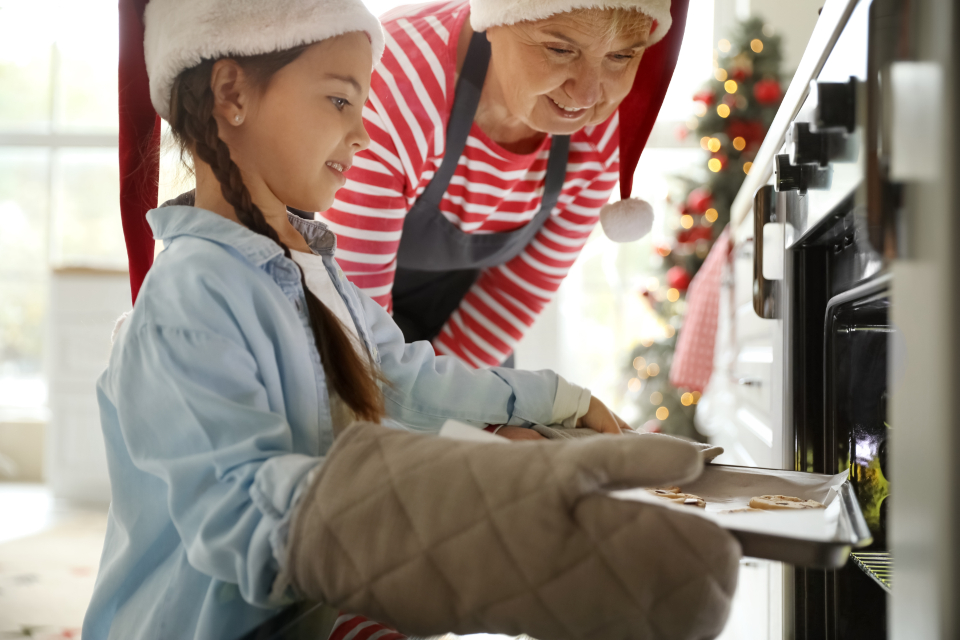
With new gathering restrictions in place, many of us are facing a holiday season unlike any other we’ve had in the past. For my family, we always travelled to the houses of relatives to spend the holidays together. This was lucky for me as Grandmothers’ houses are always filled with memorable baked goods. My sisters and sisters-in-law would also bring tasty goodies. I would contribute one or two items as well, but always left the more traditional treats to experienced hands.
This year, my family will be staying home and having Zoom calls with relatives. We have shipped our gifts to family members far and wide and will open them together, virtually. The distance is not so bad for gift opening and socializing thanks to the day and age we live in and the technology at our fingers. However, the classic holiday treats my family has grown accustomed to having this time of year is in short supply! Therefore, with a bit of proactive bakers shopping, I started getting my hands dirty…
These recipes provided below are from the more experienced bakers in my family but are also age appropriate for a few little fingers too. If you feel up to it, give them a whirl with your little helpers! I hope you enjoy them!
Preparation Tips
Some tips before starting the baking process are start with a clean workspace and end with one as well. Nothing is more daunting than a pile of dishes, so it’s best to clean as you go. You also want to be careful with hot surfaces, sharp objects, and food safety before baking with children. Remind them to wash their hands, and to ask for help when needed. And if you are going to double, or triple a recipe, I find it easiest to write down the number of ingredients I need (e.g. instead of 1 cup, write down 2, or 3 cups as to not alter the recipe too much). Lastly, if you do deviate from the recipe, be sure to write it down in your cookbook. This helps you replicate a favourite treat later, and it makes for a great memory book year after year to pass on to your children.
So let’s get cooking (rather, baking)! Be warned, although I like to substitute healthy ingredients in my recipes all the time, these recipes are holiday specific in my family. Therefore, they really are treats!
Whipped Shortbread Cookies
Ingredients:
1 cup softened butter (can’t use margarine or oil)
1 ½ cup all-purpose flour
½ cup icing sugar
½ cup glazed cherries
Parchment paper
Steps:
Source: Grandma’s Recipe!
Newfie Snowballs
Ingredients:
½ cup softened butter (can’t use margarine or oil)
½ cup evaporated milk
¼ cup cocoa
¾ cup sugar
1 tbsp vanilla
2 cups coconut shavings
2 cups oats
¾ cup coconut shavings (for coating)
Steps:
Source: Auntie Krystle’s Recipe!
Holiday Cookies
Ingredients:
2 cups all-purpose flour
1 tbsp sugar
3 tsps baking powder
½ cup shortening (or butter)
¾ cup milk
Steps:
Source: Auntie Julie’s Recipe!
Peanut Butter Marshmallow Squares
Ingredients:
½ cup butter or margarine
1 cup smooth peanut butter
1 (300g) bag of butterscotch chips or chocolate chips
1 (200g) bag of mini marshmallows
Steps:
Source: Auntie Rocky’s Recipe!
Nothing Says It Like The Smell of Baking!
Hope you enjoy these holiday treat ideas! They really make my home smell and taste like the holidays. If you have a special recipe that your family enjoys during the holidays and want to share it, send it along to me! We can all use some more sweets this season. Take care!
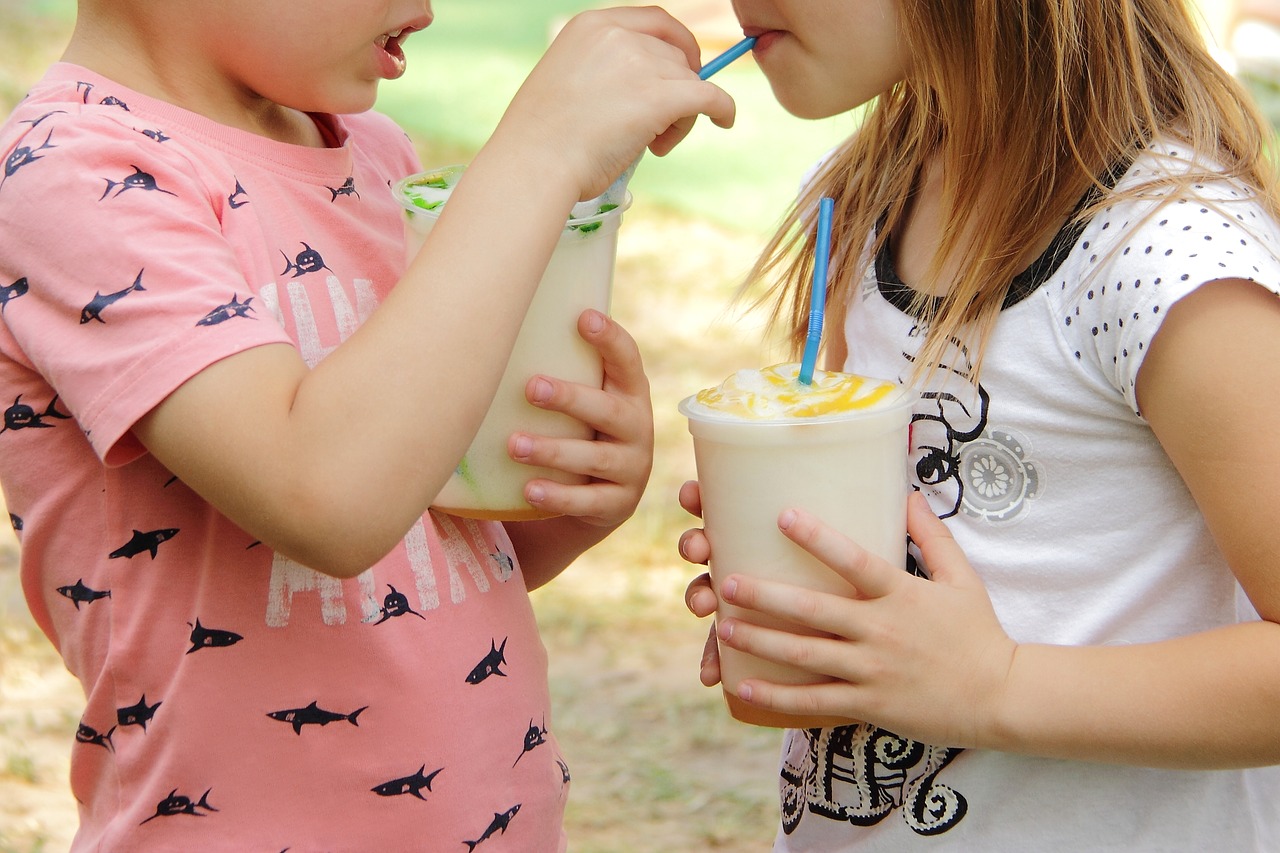
Have you ever been sick, and I mean really sick, with a toddler acting as your at-home doctor? Have you ever been bedridden as a parent and just been blown away by your child’s sense of ethics? Kindness or meanness? Notion of right or wrong?
Recently, I’ve been feeling under the weather. And I mean really under the weather. I’ve been bedridden for two months (it feels more like two years) and my only excursions from my blankets have been my very frequent trips to the washroom to feel the effects of nausea. My family has been there for me the entire time, and my children, have shown remarkable compassion.
They’ve been gentle, kind, and considerate. They’ve held my hand, brought me food (half-licked), and have done what I’ve asked on the first go. They’ve shown incredible honesty and dependability for being so young in age. They’ve shown great morality.
How on earth do they know how to do this?
What is Morality?
First off – let’s define morality. Morality, by the experts, is explained as knowing the difference between right and wrong, good or bad. Showing morality includes actions such as telling the truth, respecting other peoples’ property, showing courage, keeping your promises, not cheating, not judging, and being dependable.
Experts have always agreed that children as young as kindergarteners have shown morality, but what about kids younger than this? What about kids as young as babies?
When Does Morality Start?
It’s been some time since I’ve had a little baby but I do love to remember my tots this way. I do often look back at their early life development, whether for inspirational writing or for my own joy. So, let’s take a look at what the experts say on babies and morality. Maybe it makes itself known before those kindergarten years…
Psychologists at the University of Yale suggest babies as young as 3 months show morality. Incredible, right? How do they test for this? Babies that young are unable to talk or even point at objects. I was blown away when I read this. How could someone who has just learned to hold up their own head demonstrate morality? How could it be that they show their preference for good and bad at such a young age?
Well, I was dying to find out so I kept reading, and this is how they discovered their findings.
They showed babies a puppet show. Babies were a year old, six months old, or three months old.
The scene played out like this: A baby was shown two puppets and two bowls of food. One of the bowls contained cookies and the other, green beans. The baby was given the two bowls and had the chance to pick a small snack from one bowl. The baby chose a cookie (usually). Then, one of the puppets said it liked the cookies, and the other liked the beans. Next, the puppet show began. The baby watched as the cookie puppet played repeatedly with a ball, dropped the ball, and was returned the ball by another puppet, the helper puppet. Then the cookie puppet would play again with the ball, lose it, and on the other side was another puppet, the hinderer puppet, which stole the ball away.
Then, the show would end.
The baby was then presented with the two puppets, the helper and the hinderer. The vast majority of babies chose to snuggle with the helper. Some even gave the hinderer a smack on the head…
That is correct, even the three month old babies showed they knew the difference between right and wrong. Psychologists conducting the study suggested that this emphasizes babies are born with morality.
You can read about it here and watch it here. I also understand it’s been featured on Netflix’s Babies documentary series.
Where do We Come into Play?
So, taking this all in did open a big question for me, personally. If babies are born with this innate knowledge, do parents have a role? What if, by design, my baby’s sense of morality was, dare I say it, wrong? Could morality still be taught?
Well, the study goes on to find another interesting clue into baby design. What about the bean-loving puppet? This character did not identify with most babies. Do they still like him the same?
The experiment repeats. This time, the green bean puppet is the star. The ball is played with and lost, returned, and stolen.
The babies are then shown the helper and the hinderer. The babies chose the hinderer.
Another twist!
The psychologists conducting the study suggest this shows babies are born to show a likability for those similar to them. Characters they identify with are the ones they chose to love and/or protect. This holds true with many other studies conducted in older children and adults. As beings, we are programmed to show preference to other beings of similar taste. Makes sense I suppose, teenagers like other teenagers with the same taste in music. Adults like adults with the same taste in cars. Cookie babies like cookie puppets.
But I know my children like children that don’t have the same taste as them. My older son’s best friend likes the movie Cars. My son detests this movie, but still likes his friend. I am undoubtedly my younger son’s best friend. He shows kindness to me even though he can’t stand my preference for spicy food. If I chose green beans over cookies, would my children still show morality and be compassionate towards me? For the lack of a cookie-loving similarity, would my children still bring me half-eaten soup when I’m sick?
Luckily, yes. And this is why. The psychologists that conducted the study also tell the story that morality still needs to be taught, developed, and nurtured to fully develop. The green bean puppet story tells us this. Children do not go through life only liking those of similar taste. So this is where we, as parents, come in!
How do I Nurture Morality?
According to Psychology Today Canada (here), young children are egocentric, meaning they follow their impulses and wishes. If your child takes candy off the counter at a store without asking, it certainly doesn’t mean they are growing up without moral fibre. It just means they wanted the candy.
We see this behaviour in young children, a little less in older children, and a little less still in adults. What is happening as we age? Are we coming to learn more about the differences between right and wrong and that is what is guiding our impulses and wishes? Correct. We are learning.
And how do we learn? Through role modelling.
What to Teach and Model?
Not another blog about role modelling, right? I’ll keep it brief!
What do we want our kids to learn and how do we show them – four main categories and examples:
The best way to encourage honesty is by being honest. How many of us have taken our children to the movies or indoor jungle gym and said they were a different age than they truly are? Have you ever told someone your child is sick so you didn’t have to go on a play date? These little lies resonate with children. When your child hears them, even if given a thoughtful and considerate answer for why it was done, they are still seeing and hearing that sometimes it’s okay to lie and that lying is a natural part of life. The only way to correct this is to be honest even when it affects you negatively. You may have to pay more to watch a movie at the theatre, but your child is reaping the rewards for having heard something honest. This will help them learn that telling the truth is important, even if it affects them in a negative way.
How do we remedy a situation in our lives that was our fault? My kids are fairly boisterous and competitive. These are normal and positive behaviours. They often disagree on things too. Again normal. Sometimes, they start to disagree with their arms and legs and a polite person would call it a tumbling match. As their Mom, I can see the difference between rough and tumble games and a battle over a toy. When you have a disagreement with someone, or have done something wrong, how do you make amends? We say sorry, we give hugs, or we do something kind for the other person. These actionable doings do more than just make the other person feel better. They teach justice. When someone has done something wrong, something is done to make it right. Making amends isn’t a consequence or penalty, but it is something done by the wrongdoer to show remorse. How do I model this? I make it right with actions. When one of my children has done something wrong, I also get them to make amends. As a Mom learning what works best for which child, I’ve learned that giving something of importance to them makes the most impact. My three year old gives cookies to apologize and my sensitive five year old give hugs. These favourites will change in the future so I will have to remain on top of my game.
Words and actions affect how other people feel. Kids pick up on this. When I’m sick, I’m already feeling stressed. A noisy household is hardly making me feel any better. So when my kids come see me, they talk quietly and do their best not to tackle or jump on me. How do they know to do this? I’ve deduced that my kids likely feel their most stressed out self when they are in a time-out. They’ve just done something wrong, need a minute to compose themselves, and are in their room replaying “the bad parts.” When I go in to see them, do I start shouting and bullying them? No, I sit down beside them and calmly have a little chat about actions and feelings. My actions towards their feelings in those moments maybe have more positive benefit than the words themselves. My children can see that actions affect their feelings. Push over their block tower? This action hurt their feelings. Give them a hug? This action boosts positive feelings. Good role modelling to teach consideration is critical.
Lastly, be generous with your affection. A busy day can get away from you but little affectionate gestures make a world of difference to a child. Big grand gestures are also fantastic but many little ones are the real winner when it comes to instilling affection in your child. Show them affection by showing love to others as well as them. Show affection to their other parent, grandparents, family, and friends. Never be too busy for a hug or to say you love them. Write them little notes to tell them how special they are to you and do the activities they like to do. Tell them you love them every night before bed. Once they hear it enough, they will start to say it back. By showing your love, you may be instilling perhaps the greatest value of all.
How do You Show Morality?
I certainly hope that you’ve had a good time reading this blog. Learning what I’ve learned has made me realize that my youngsters, even though amazingly born with a moral compass, have also gained a few tips along the way from me and the rest of their families. The only way I know how to continue teaching them is to teach them how I want to be treated. So give it a go with your child. They may bring you soup the next time you are sick – even if you like green beans!
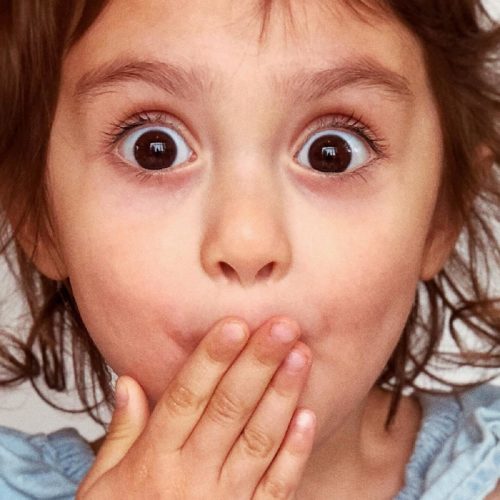
With all that is going on outside the home these days, my family has been cooped up for a while. We’ve done a few fun family indoor activities to keep things interesting and my son, Grizzly Bear, wanted to share one with you! Magic tricks!
Grizzly Bear has always loved magic. The first time we saw the movie Onward, he ran outside to grab a stick, called it a splinter, and asked me to say the magic words to turn it into a wizards staff. It was a heartbreaking moment to see his little chest fall with disappointment when nothing happened. So, since then, he occasionally comes up with his own magic tricks and puts on a show for us. This week, I had a chance to help him out. I looked up a few tricks for tots and we did the show together! These are the fun magic tricks we learned and they are easy for kids to do!
The Disappearing Penny
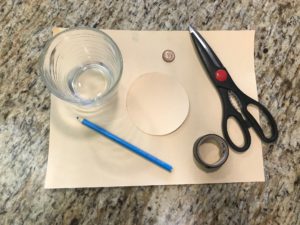
This one got me good, and got my husband too! It’s very easy for kids to do and even my three year old Polar Bear tricked his Dad. An old penny is made to disappear under a magic cup then reappear at will! My husband’s voice got all pitchy, his eyes widened, and he demanded Polar Bear show him the trick. Curious? Here’s how to do it.
The Materials:
The Prep:
Turn the cup upside down and use it to draw a circle on one piece of construction paper. Cut the circle out and tape it to the opening of the cup.
The Trick:
On the second piece of construction paper, put the penny on one side and the cup on the other. Show your audience the penny as it disappears under the cup you slowly slide over top of it. Then make the penny reappear again. Magic!
The Magic Scarf
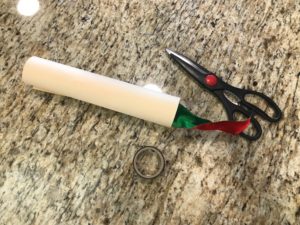
This one is cute and easy too! Grizzly Bear uses a paper telescope to show the audience nothing is there but paper, then he makes a scarf (we used Christmas ribbon) to appear out of thin air! Want to know the secret?
The Materials:
The Prep:
Roll the paper into a cylinder making it very tight on one side and leaving a gap on the other side. Stuff the scarf or ribbon into the gap.
The Trick:
Show the audience the telescope by looking through it at them. They can see there’s nothing inside. Then pull out the scarf or ribbon from the other side. Tah-dah!
The Vanishing Crayons
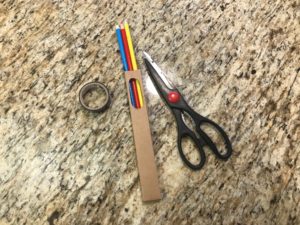
This one takes some nimble fingers but Grizzly Bear got it after a few tries. Crayons are shown in their box to the audience, then the box is flipped and the crayons vanish! It was very cute to watch him confuse his brother. Polar Bear had the most adorable look on his face trying to figure it out!
The Materials:
The Prep:
Cut a square hole in the crayon box to show the audience the crayons inside. This step isn’t required if your box already has a hole. Use the knife to cut the crayons in half and tape the top halves together so it still looks like a normal box of crayons to the audience but the bottom half of the box is empty.
The Trick:
When showing the crayons to the audience, apply pressure to the crayons in the box so the audience can see them through the hole. Then flip the box, toot some magic mumbo-jumbo, and poof! The crayons vanish!
My Shy Friend
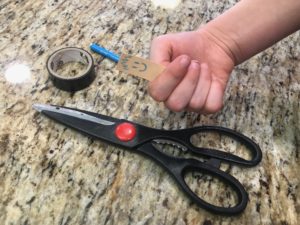
This one was by far my Grizzly Bear’s favourite magic trick! He loved his new friend and couldn’t stop giggling when he disappeared. After the show was over, he even followed my husband around while he did the dishes, showing him the little paper friend he had one second, and the next was gone! Need to know how?
The Material:
The Prep:
Cut a small piece of paper out, the width of your child’s finger and as long as a toothpick. Colour on a little smiley face on one side. Tape the bottom side to your child’s thumbnail.
The Trick:
As your child makes a fist with their hand, with the thumb on the inside of the fist, the friend is smiling at the audience. When the child’s hand opens, the friend disappears! He was inspirational, and my son even made it sound like the friend was shy. Adorable!
The Magic is in You!
I really hope you and your little one get a chance to try some of these out! Even in the familiarity of my own living room, I felt like I was laughing with a crowd in a big circus tent! But don’t forget, the magic is in you! Even though my children were the stars of our little magic show, I couldn’t help but feel the audience (me and my husband) were the magic in their eyes. When your child “gets up on stage,” be sure to give them your attention, be inspired by their talents, be amazed at their tricks, and laugh with them. Magic isn’t magic if there’s no one to share it with!
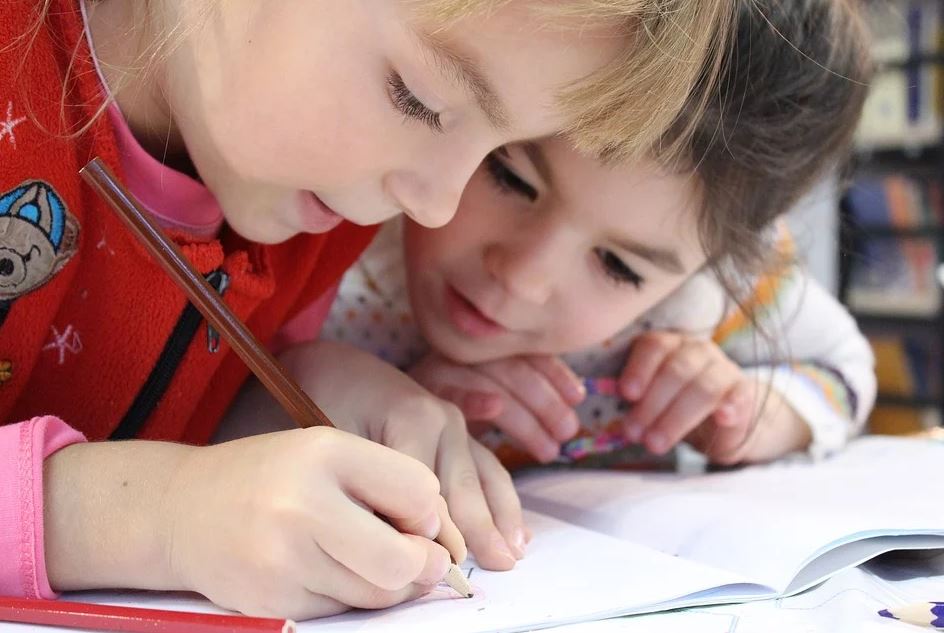
Undoubtedly, one of my favourite things about being a parent is living vicariously through my children. Do you recall the first time you wrote your own name by yourself? Your first memory of tying your own shoe? The first time you solved your own problem?
I have to admit, I don’t recall many of my first accomplishments, but my parents do! They have tons of old stories of the wondrous adventures I’d get into and how I got out of them. And that’s how I know I’ll never forget my children’s accomplishments and how they find solutions to the many new adventures they take. The look of joy and pride on their faces as they work out how to finish their very own puzzle – inspiring! It’s like I’m reliving the best moments of my life with the addition of knowing I’m giving them theirs. It’s pretty amazing.
So, along with being that incredible parent moment, what else does a child solving their own problems do? What’s the significance?
The Importance
KARA has recently crafted Nurturing Problem-Solving Skills in Children, a newsletter on the importance of problem solving in children and how we, as parents, can nurture healthy problem solving skills. Why is this skill so important? The short answer is that it provides children with various skills to develop and maintain healthy relationships with others.
Really, you ask? How does that correlate? Problem-solving skills lead to harmonious relationship skills? What’s the link between these two unlikely talents?
Imagine being a little kid presented with a problem. You have a square block and you’re trying to smash it into a triangular hole. You try one thing and it doesn’t work! Time to throw yourself on the carpet for the adorable “world-is-crashing-around-me-tantrum!”
Now imagine your parent or caring older sibling comes over and says, “Maybe we can try a different block!”
You give it a go and it works! Pride and joy overcome you and everyone is giving you a high five – but not because you selected the right shape – nope. It’s because you have chosen to be open-minded.
That’s right! Kudos to you, little guy or gal, because being open-minded is one of the most important life-skills you can have! It opens doors with a number of significant people in your future life – your parents, teachers, employers, and significant others. It’s the skill needed for any positive relationship! It allows you, as the person you are, to have your own values and opinions, but still see the significance of others’ values and opinions.
For this reason, problem solving is arguably one of the most important skills one can gain in life. And I like to think children are naturally born with this ability to try new things and take advice from others. And with a little help from family, we gain the confidence to continue to grow in that regard.
Where it All Starts
Babies are natural born problem solvers. From the first moment they open their eyes, they are taking everything in and making new connections. They problem solve in a way we don’t even recognize – or I didn’t at first anyway!
When my first baby came along, I was an excited new mom. Although he had been solving problems for weeks before I caught on, the first time I recognized it was pretty exciting to say the least.
I sat holding him in my arms, smiling down at him with the look of a parent totally in love. And as he looked back at me, something miraculous happened. He smiled back.
Yes that’s right, he figured out how to copy me. I’m sure it took him a few tries to get the right muscles to work, and then the connections were made and he smiled. And the more I smiled at him, the more practice he had to do it back. And before either of us knew it, he had solved a problem – how to show the world what he was feeling.
So the lifelong adventure began – and never stopped! Watch, try, mimic, practice, solve. The race was on.
But how did I help him and his little brother continue to develop these skills?
Fostering the Skills
I feel there are endless possibilities when it comes to helping your little ones succeed. Problem solving how to help your little one problem solve – it’s problem solving at its finest! I try showing, teaching, explaining, waiting, listening, learning, coaching, and a bevy of other things at times. But the three most important things I’d say are being there for them, handing out the praise, and being open-minded.
My guys are in different stages of life, and they are both past the point of learning how to smile or shape sort. How do I help them problem solve their more difficult problems? After all, being five and three isn’t easy.
Since problem solving at those ages is a daily occurrence (in fact, more like a minutely occurrence), I’ll just stick to two examples – two of my children’s favourite pastimes at their current ages. For my five year old, that’s space exploration. For my three year old, it’s dinosaurs.
I’ll start with my five year old since I find the younger they are, the easier the problem but the harder it is to solve. For my older guy, the problem is more difficult, but the foundation of problem solving exercises is more set up for success. I have an odd feeling that when we get to the gauntlet of challenges that is adolescence, this paradigm will shift dramatically, but I’m not there yet to give evidence.
My five year old has already succeeded in writing his own name and learning to ride a bike. He is already familiar with “start at the beginning” and “practice makes perfect” and has his own memories to serve as evidence of success. Therefore, I like to give him the space he needs to try his own hand. He loves space, learning about the planets, and, above all, space robots. The first thing is to help him challenge himself by providing him with the right tools. We’ve purchased him a space robot game that is challenging. He can’t get enough of it. It could be the robot but I think it has to do more with the sense of accomplishment. The next thing is to give him space and only venture in when he truly needs help. In the midst of a pandemic when I’m working remotely at home, this works very well. I’ve set him up next to my work station. He is out of reach and out of eyesight. This means I do not know what is going on in his game at any given time so when he runs into a problem, he has the choice of asking me for help (where he has to take a great deal of time to catch me up to speed) or he ventures on in his element, independently trying various tactics to progress. He often chooses his own independence over engaging me. He says what the problem is out loud, just as he was taught, and then progresses to solve it on his own. But he never misses a chance to show me what he has accomplished, what robot he has built, or what planet he has discovered. Truly inspirational.
My three year old is a dinosaur fanatic. He is all about setting up his own prehistoric landscapes and acting out various scenes (most of which are family related where dinosaurs are his parents and sibling). He too, needed the right materials and challenging scenarios to excel. We bought him dinosaur figurines and have been teaching him the names (this has been a learning adventure for me too as I preferred dolls over dinosaurs when I was three). Hearing a young tot correctly identify various prehistoric creatures with lengthy names has been amazing. But let’s get to the problem. When he loses a toy, can’t recall a name, or something else is awry, he comes barreling into the room. We work together to say the problem out loud together. This, I find, is very helpful to young ones. It helps them identify the problem, the key to working toward a solution. One day, he came in to explain his problem, attempting to say it out loud on his own. This was challenging in itself and posed as our first problem – giving me an indication of what the problem was. It took time, trying various things, like new words and motions, and eventually, we came to an understanding. The velociraptor figurine was larger in size than the brachiosaurus. Hysterically, explaining to me, his dino newbie mom, that the dinosaurs I had purchased him were anatomically incorrect posed a harder task than the problem he originally had. He was given tons of praise for identifying his problem and even given the chance to explain his new findings over the phone to his grandparents, using his new words and motions. What a smartie pants!
A Problem Solving Exercise for All Ages
In KARA’s newsletter, there is a bevy of fun exercises one can do with their children to promote problem solving skills! Examples are stacking games, scavenger hunts, and puzzles. I also have a problem solving idea that fits well with this festive time of year, and should be a good time for any age – tree decorating! With a few inspirational anecdotes now in your back pocket, give this one a go with your little one. Here are a few ideas on how to problem solve together!
Last Note
As you’ve read, helping a child learn to problem solve is a miraculous way of providing them with an essential skill for later life. Having that open-mind is a game changer. Plus, the excitement and happiness as they make everyone around them proud will give them confidence and desire to problem solve again and again!
And what about you? Reliving your childhood memories through the eyes of your child has got to be the added cherry on top!
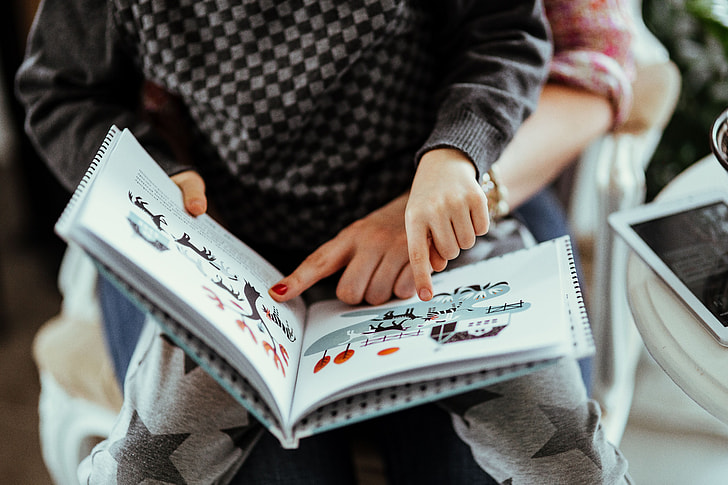
I grew up in a large family and almost all of us are avid readers.
My older sister reads a new book every one to two days. I know what you are thinking – they must be pretty small books!? You wouldn’t think that she could be reading 500 page novels in a single day! But she does. She is just an incredibly fast reader. Once, when I was a small child, I watched her eyes while she read. They flew across the page like an eagle chasing its prey. It was remarkable to see. She tells me she has always loved reading. In fact, she loved reading so much that when she would get in trouble, our parents actually took away her books as punishment! They were more important to her than any other toy.
My younger sister is an avid reader as well. She enjoys classic novels and hasn’t missed a single best-seller. She reads at a more normal pace but never stops. She loves reading and always tells me about the newest book she has just dived into.
My older brother also enjoys reading. He prefers magical and heroic quests that he can immerse himself in. He really connects with individual characters and their struggles. His favourite characters even become part of his everyday life – he cares for his beloved characters so much, he has used their names for his pets and children!
My Dad is the king of reading – for that’s what we all know him as. His personal library is so expansive and he is so fond of his books that my Mom has to sneakily recycle or donate them to make room for more. He reads everything from manuals and historical narratives to Do-It-Yourself books and literary novels. Any topic of conversation, and he has read a book that will enable him to be the master of the discussion. He is a walking encyclopedia (of which he has four sets).
My Mom is less of a reader than the rest of my family but she is only overshadowed due to the vastness of the rest. She is still the only person I know who reads a newspaper (the entire newspaper front to back) every day. This makes her very knowledgeable on current affairs, but, albeit, a less interesting conversationalist – just kidding Mom!
As for myself – well I’ll get to that in a moment…
Reading Stats
We’ve all been told at one point that reading to our children is important – and it is! If you weren’t aware of the benefits, nothing says it better than KARA’s newest Playing Together, Growing Together Newsletter – Reading for Pleasure. Children gain literacy skills, build confidence and relationships, shape their imaginations, and become life-long learners! What better way to set your child up for success!
The 20 minute/day rule is what pops out the most to me when I think about my kids and our reading schedules. So I make sure to put in the time and more whenever possible to encourage my children’s healthy reading habits. After all, that’s what my parents and grandparents did, and it worked well for my parents and siblings!
So what more do I need to know?
Well, I was curious what the statistics said about reading. Since we put in so much time (608 hours in the first five years of life!), I was interested to know exactly how the benefits affected a child later in life. Let’s check it out!
The Department of Education and Early Childhood Development at the University of Melbourne followed a group of 4,000 children aged 4 to 5 years through until they were 10 to 11 years. The study included taking information on each child’s family environment, early childhood experiences, and physical and socio-emotional state. The study, focusing on the effects of reading, also captured the frequency of parents reading to their child. All this over six years – that’s a lot of data – what did they find?
I’ll tell you! The data showed that reading to children at age 4 to 5 every day had a significant boosting effect on the child’s language, literacy, numeracy, and cognitive skills, propelling them ahead of the curve. Reading to a child 3 to 5 days/week boosted the child ahead so that they had the same skills as a child 6 months older than him or her. Reading to a child 6 to 7 days/week boosted the child ahead so that they had the same skills as a child 12 months older than him or her! Crazy, right? Furthermore, children that were read to more frequently at age 4 to 5 achieved higher scores on standardized literacy and numeracy tests in Grade 3 (age 8 to 9). The really cool part is that the differences in reading and cognitive skills are not related to the child’s background or home environment but are the direct result of how frequently they had been read to prior to starting school.
Now, my children are incredibly smart (probably that instinctual-mom-thing-to-say), but they are also just starting their reading journey, so rather than asking my children how they felt reading affected them, I went a different way to determine if the science proved true in my personal life. I asked my 16 year old niece and this is what she had to say on the subject:
“Reading is a very important aspect of my life, and fun as well! Books and stories are very important to me. They help fuel my creative side while working my brain with new words and phrases. I find exercising my brain like this very enjoyable! It probably stems from when my mother would read to me every night. They were usually books like Little House on the Prairie, Black Beauty, and Roald Dahl to mix things up! When I finish school, I plan to become a lawyer. I believe one of the main reasons I want to follow that career path is because I love to read books about solving mysteries and helping people, and I want to relive those precious stories! Reading also drastically improved my vocabulary, ability to write stories, and love for writing, which really helps in the workplace. I just hope I still have time for my stories when I get my dream job!”
Reading this anecdote always makes me tear up! She is going to be a terrific lawyer (although I hope she will always be my editor too)!
Personal Reading Quests
Like the rest of my family, I was read to as a child. Shockingly, I never become an avid reader though. This was always pointed out to me throughout my childhood and even into my adulthood. True, I do read about 5 books a night, but I’m not sure The Very Hungry Caterpillar counts…
Being surrounded by so many other readers and having the same time spent being read to, what happened? Well I never became a reader.
I became a writer!
The End
I hope these narratives, statistics, anecdotes, and inspirational inscriptions inspire you to read to your loved one. It’s never too early or late in the day to pick up a book and spend a couple of minutes sharing an adventure with your child. They will love and cherish it, and it will affect them more than you think!